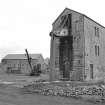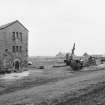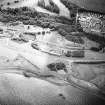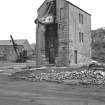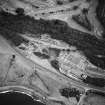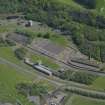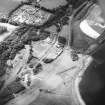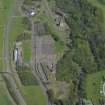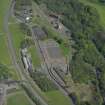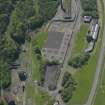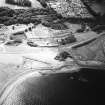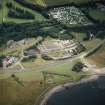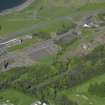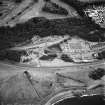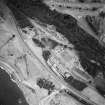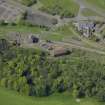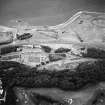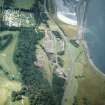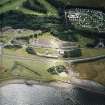Pricing Change
New pricing for orders of material from this site will come into place shortly. Charges for supply of digital images, digitisation on demand, prints and licensing will be altered.
Prestongrange Colliery, Pumping Engine
Beam Engine (19th Century), Engine House (19th Century)
Site Name Prestongrange Colliery, Pumping Engine
Classification Beam Engine (19th Century), Engine House (19th Century)
Alternative Name(s) Prestongrange Colliery, Beam Engine House; Cornish Beam Pumping Engine
Canmore ID 53725
Site Number NT37SE 78.01
NGR NT 37303 73651
Datum OSGB36 - NGR
Permalink http://canmore.org.uk/site/53725
- Council East Lothian
- Parish Prestonpans
- Former Region Lothian
- Former District East Lothian
- Former County East Lothian
NT37SE 78.01 37303 73651.
See NT37SE 78.00.
(Location cited as NT 373 737 and name as Prestongrange Pumping Engine). The sole surviving beam pumping engine in Scotland. A 70ins (1.77m) Cornish engine built by Harvey of Hayle for the Summerlee Iron Co in 1874; it was enlarged in 1895, when the cast-iron beam was strengthened. The engine is being restored as the centrepiece of a museum of mining. The former power station of the colliery, a single-storey brick building with round-headed windows, has been reroofed and is at present being used to display dismantled machinery, oending display. Nearby are the remains of a stoneware pipeworks.
J R Hume 1976.
Beam engine at Prestongrange Colliery, near the coast road... Cornish type, ie. the sort of engine that was used to pump water from the deep Cornish tin mines. On the door, the inscription MH (Harvey & Co. of Hayle, Cornwall), 1874. The capacity of the pump was increased in 1895 to 900 gallons (4000 lit.) a minute and it went on working till the closure of the colliery in 1952, a century after its opening.
C McWilliam 1978.
Publication Account (1985)
The first shaft of what was to become the last mine at Prestongrange was sunk in 1830; the great beam engine built by Harvey and Company of Hoyle, in Cornwall, was shipped north and erected in 1874 to pump water out of the mine. The water was raised in three stages, with one pump at the Great Seam level (approximately 128 m), one half-way to the surface, and one at the Beggar Seam (approximately 238 m). On average some 2955 litres a minute reached the surface.
The massive cylinder is housed in a tall, narrow, rubble-built engine house. High up, more than 10 m of cast-iron beam protrudes, to which is attached the 102 tonne pump-rod of Oregon pine. The beam pivots on the front wall of the engine-house, which is understandably reinforced! The generating station and the much later pithead baths are the only other surviving original pit buildings on site.
Nearby, however, stand a 24-chamber 'continuous' Hoffmann kiln and its chimney - all that remains of the Brick and Fireclay Works. It was common for industries that depended on coal for power to cluster near to the colliery. Brickworks, potteries, chemical works, breweries, saltworks and a flint-mill were all once sited hereabouts, whilst the right to construct a harbour at Prestongrange (the old Acheson's, later Morison's Haven) was granted as early as 1526 to the coal-working monks of New battle. A few traces remain. The monks were also involved in salt-working and Prestonpans, so called from the 18th century, was originally Aldhammer but renamed Salt Prieston in the 13th century.
A 'coal trail' now links Prestongrange and Newtongrange (no. 1) - by way of Preston pans (17th century lairds' houses and mercat cross); Meadowmill (site of Battle of Prestonpans 1745, and Scotland's first railway 1722); Tranent (coal town from late 15th century; 18th century parish church with fine gravestones); Birsley Brae (hummocky pits of a medieval coal heugh); Fa'side (restored tower-house; fine view over Lothian Coalfield); Dalkeith (old market town and ruinous pre-Reformation Collegiate Church
ofSt Nicholas); Newbattle (18th century mansion of the Marquis of Lothian; remains of 13th century Cistercian Abbey; Maiden Bridge).
Information from 'Exploring Scotland’s Heritage, Lothian and Borders, (1985).
Publication Account (1986)
Now preserved as an industrial monument, this giant beam-engine at the former Prestongrange colliery is a worthy tribute in Scotland to its builders, the famous engineering firm of Harvey & Co., of Hayle, Cornwall.Built in 1874 to pump water from a depth of 800ft (244m), it is a single-acting non-rotative beam-engine of a type once extensively used for draining mines in Britain, but notably in Cornwall, where the majority were manufactured. In common with other Cornish engines, its distinctive feature is the nature of the cycle, which in essence uses high pressure steam, controlled by a system of cut-off levers and valves, in such a way as to give a high degree of economy.
The engine forms an integral part of the engine-house, and the massive cast-iron beam, which weighs approximately 30 tons (30.38 tonnes), must presumably have been raised to its height of 27 ft (8.23m) by means of jacks as the work proceeded, or winched into position subsequently on timber shores. The beam is 33 ft (10'06 m) long and 6 ft 4 in (1.93m) deep at the centre, with the fulcrum located eccentrically at a point 18ft (5.49m) from the steam end, giving the latter a stroke of 12 ft (3.66m) and the pump-rams one of 10 ft (3.05m). The engine was equipped with a steam cylinder of 70 in (1'78 m) diameter and developed a normal working speed of three and a half strokes per minute and a water-pumping capacity of 650 gallons (2,955 litres) per minute. It was modified in 1895 to work larger shaft-pumps with rods of 23 in-square (0.58m) Oregon pine, for which purpose an ingenious overhead strengthening truss had to be contrived on the beam. The engine continued to be fully operational until 1954 and is the centre-piece of a historical site devoted to the Scottish coal industry.
Information from ‘Monuments of Industry: An Illustrated Historical Record’, (1986).
Field Visit
Cornish Beam Pumping Engine, Prestongrange, East Lothian
Now preserved as a major industrial monument, this giant beam engine at the former Prestongrange Colliery is also a worthy tribute in Scotland to its makers, the famous engineering firm of Harvey and Co. of Hayle, Cornwall. Built in 1874 to pump water from a depth of 800 ft., it is a single-acting non-rotative beam -engine of a type once extensively used in draining mines in Britain, but notably in Cornwall, where the majority of these types of engines were manufactured.
In common with other 'Cornish' engines, its distinctive feature is the design of the stroke which in essence utilises high pressure steam, aided by a system of 'cut -off' levers and valves, in such a way as to give the piston a much smoother action.
The engine forms an integral part of the engine-house and the massive cast-iron beam, which weighs approximately 30 tons, must coneceivably have been raised to its height of 27 ft. by means of jacks as the building work proceeded or winched into position subsequently on timber shores (this latter method was employed at the Ryhope Pumping Station, Co. Durham). (1) The beam is 33ft. in length and 6ft. 4 in. in depth at the centre, with the fulcrum located eccentrically at a point 18ft. from the steam end, giving the latter a stroke of 12ft. and the pump rams one of 10ft. (2)
Equipped with a steam cylinder of 70 in. in diameter, the engine developed a normal working speed of 3 1/2 strokes per minute, and a water pumping capacity of 650 gallons per minute.
The engine was modified in 1895 to work larger shaft pumps with rods of 23 in. square Oregon pine, for which purpose an ingenious overhead strengthening truss had to be contrived on the beam. The engine continued to be fully operational until 1954 and is planned to become the centre-piece of a historical site devoted to the Scottish coal industry.
Notes
(1) See Hudson, K World Industrial Archaeology (1979), illustration 195.
(2) Technical Information Sheet, Prestongrange Museum.
References
Cossons, N, BP Book of Industrial Archaeology (1978), 3rd imp., 102-3
Buchanan, R A , Industrial Archaeology in Britain (1980), new ed. 253-4
Butt, J, and Donnachie, I, Industrial Archaeology in the British Isles (1979), 42-3
NOTE: In the Journal of the Trevithick Society (1982), however, researches of K. Brown attribute the make of the engine itself to JE Mare of Plymouth in 1853 and only the beam itself to Harvey of Hayle. The panel above the door, inscribed 'M 1874 L' stands for Matthew Loam of Liskeard who sold the engine in partnership with Harvey of Hayle and who erected it at Prestongrange that year. (See detailed account and correspondence in the manuscript file).
Information from NRHE, MS 232/LO/EA/3 record sheet.





















































